
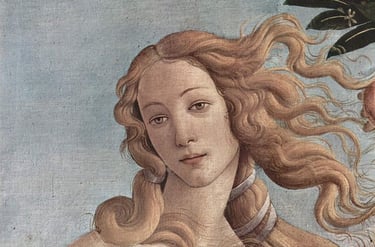
La Bella Simonetta, a name whispered through the alleys and castles of Florence, and carries a symbol of ethereal beauty and timeless grace. Born around 1453 in the coastal realms of Genoa or Porto Venere, Simonetta Cattaneo Vespucci exceeded mere admiration to become the embodiment of Renaissance beauty. Her renowned and otherworldly charm elevated her to a near-mythic status. Her presence in the Medici court made her the star of Florence’s elites, becoming a muse for many artists of the era, particularly Sandro Botticelli, whose work immortalized her.
Life
Born to the noble Cattaneo family, a well-established and prestigious family in the Genoa region, which likely provided Simonetta with privileges unavailable to most women of her time. However, noble status didn't necessarily mean a life free of struggles, she most likely faced challenges typical of women in her era. Simonetta married at the young age of 15-16 to Marco Vespucci, a Florentine nobleman and they moved to Florence where they became part of the Medici court, one of the most influential and powerful families in Italy. She moved to a culture that highly valued and idealized female beauty, so her appearance was quickly noticed and admired by people. She was also praised for her intelligence and virtue, yet much of Simonetta's early life remains a mystery due to limited records and most mentions being focused on her beauty and impact on others, rather than her own perspectives and ideas.
Death
Tragically, Simonetta died young at the age of 22, in 1476. The cause of her death is likely to have been tuberculosis, while some suggest it was pneumonia. Unusual for the times, her body was displayed in an open casket burial; this was probably done to give the people one final look into her beauty. It is believed that the whole population of Florence mourned her death. Historical records indicate that her funeral was indeed a significant public event in Florence. Simonetta was buried in the Church of Ognissanti in Florence, but her image continued to live through many paintings.


Legacy
Sandro Botticelli
Simonetta is most famously linked to Sandro Botticelli's renowned painting "The Birth of Venus," in which she is depicted as the epitome of the Renaissance's ideals of femininity. Botticelli, a respected early Renaissance Italian painter, is believed to have used her as a model for a number of his masterpieces. However, there is no hard evidence to support this theory. Her striking resemblance to several of the figures in his paintings suggests that she had a great influence on him. According to John Ruskin, Botticelli had fallen in love with Simonetta. This is supported by His final wish to rest in the Vespucci family’s church, where Simonetta belonged, his dying wish was honored when he passed in 1510, at the age of 65, fulfilling his heart's quiet desire.


Piero Di Cosimo
Like Botticelli, Piero di Cosimo was fascinated by Simonetta's legendary beauty, wielding her image in some of his most famous works. She was an essential muse for him, and a significant feature in his paintings. Di Cosimo’s portrait of her is one of the most iconic representations of Renaissance beauty. There is no documented evidence of a personal relationship between Piero di Cosimo and Simonetta, but her appealing traits and status as "La Bella Simonetta" became a potent inspiration for him, as did for other painters at the time.
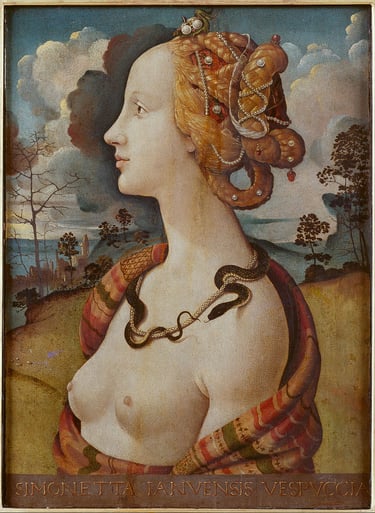

The Medici's
Renaissance poetry and art have romanticized the special bond that Giuliano de' Medici and Simonetta Cattaneo Vespucci had. Giuliano was the younger brother of Lorenzo de' Medici, the de facto ruler of Florence. As the Medici family was well-known for their patronage of the arts, and similar to his sibling, Giuliano was actively involved in the 15th-century cultural revival that was thriving in Florence. He took part in the "Giostra di Lorenzo de' Medici," a jousting competition where contestants showcased their fighting skills, where he dedicated his win to Simonetta declaring her the "Queen of Beauty" (Regina della Bellezza). Some have perceived Giuliano's open devotion to Simonetta as an example of courtly love, in which a knight passionately worships an unreachable woman in accordance with the principles of chivalric romance. There isn't any historical proof that Giuliano and Simonetta had a love affair, yet their connection has been greatly idealized over time.
“Stanze per la Giostra” (Stanzas for the Joust is one of the famous poems dedicated to Simonetta, written by the poet Angelo Poliziano to commemorate Giuliano de’ Medici’s victory in the 1475 joust.
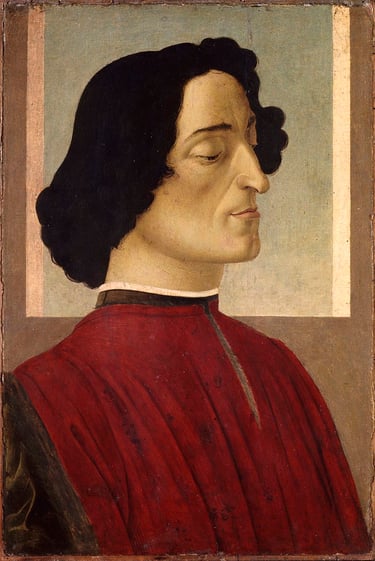

Excerpt:
"Era più chiara assai ch'un vivo sole
La bella donna che nel viso apparse,
Quando per giostra, a guisa di un iddio,
Giuliano mostrò di non aver pare."
Translation:
"She was much brighter than a living sun,
The beautiful woman who appeared in face,
When at the joust, like a god,
Giuliano showed he had no equal."
Lorenzo de' Medici is said to have composed "The Desert Nymph" (originally known as "La Ninfa Fiesolana" in Italian) about Simonetta Vespucci. It's a lovely piece of Renaissance poetry that conveys both the fleeting nature of these interactions and the idealization of beauty. The poem can be found in "Lorenzo de' Medici: Selected Poems and Prose" translated by Jon Thiem. Lorenzo de' Medici, also known as Lorenzo the Magnificent, was a powerful patron of the arts in Florence and a poet himself. He knew Simonetta personally and was among those who mourned her early death.
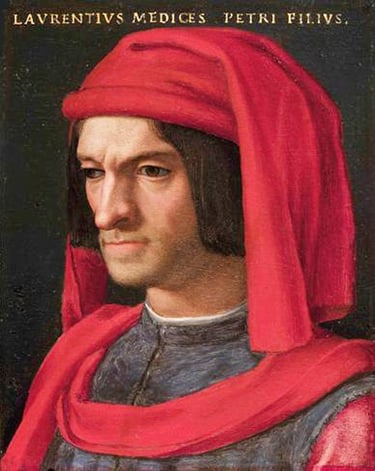

Excerpt:
Quivi sovente ancor convien ch'io cheggia
quella, che il debil core
prima con gli occhi suoi traffisse, e l'alma.
Pe' folti boschi ancor sovente veggio
l'orme sue belle, e la mia bella donna
fuggir tra' fiori e l'erba,
pietosa in vista, ma nell'alma dura,
talchè mi sforza a lacrimar mia sorte;
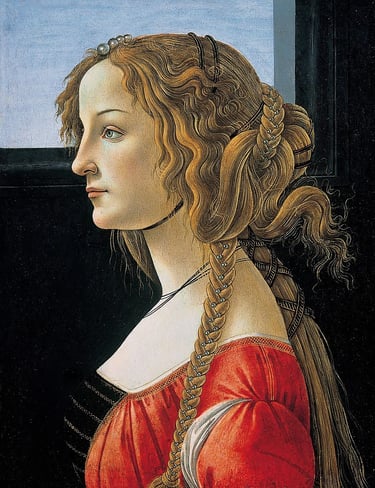

Translation:
Here often still I'm compelled to seek
she who first pierced my feeble heart
and soul with her eyes.
Through dense woods I often still see
her beautiful footprints, and my beautiful lady
fleeing among flowers and grass,
seeming compassionate, but with a hard soul,
such that it forces me to weep at my fate;
Other possible representations
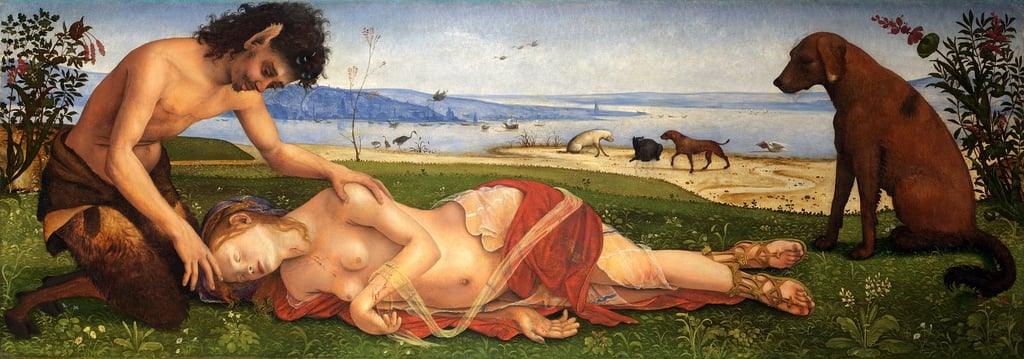

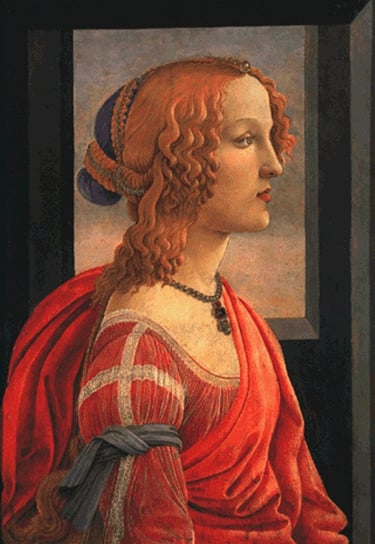


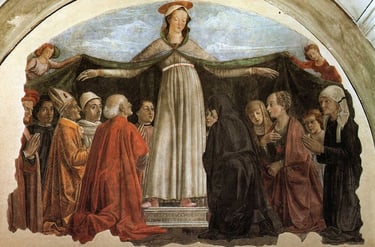

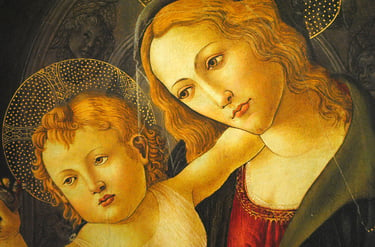
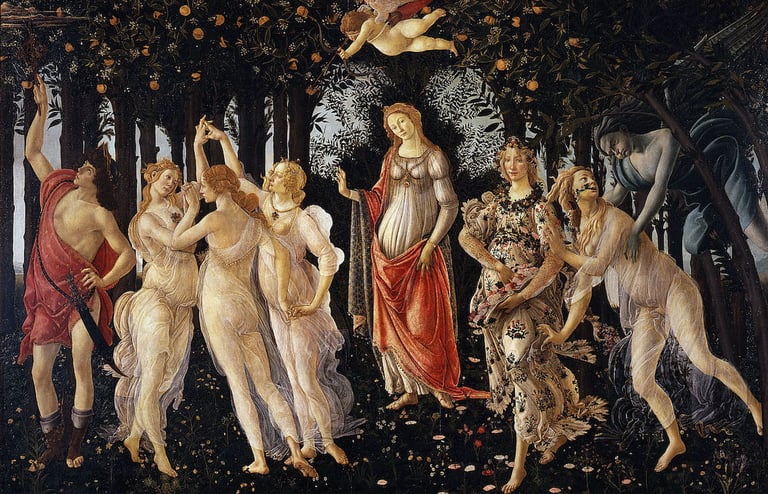

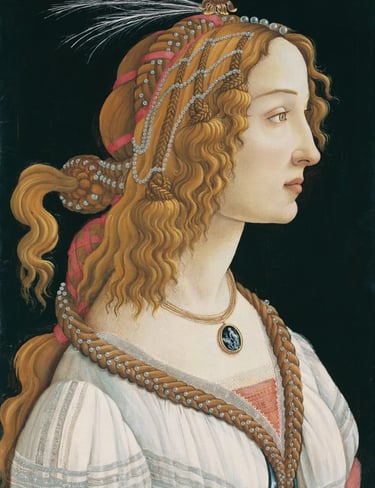

Sandro Botticelli, The Birth of Venus (c. 1484–1486)
Simonetta Vespucci retrato póstumo (c. 1476-80) por Sandro Botticelli
Portrait of a Woman by the workshop of Sandro Botticelli, early-mid 1480s
Portrait of a woman, said to be of Vespucci (c. 1490), by Piero di Cosimo
Portrait of Giuliano de' Medici, by Sandro Botticelli, circa 1478 and circa 1480
Portrait of Lorenzo the Magnificent, Workshop of Bronzino - between 1565 and 1569
La Bella Simonetta, Probably Sandro Botticelli - circa 1480-1485
Madonna of Mercy and Lamentation and Pieta, Domenico Ghirlandaio - circa 1472
Madonna col Bambino in una nicchia, by Sandro Botticelli - 1476
Primavera, by Sandro Botticelli - late 1470s or early 1480s
